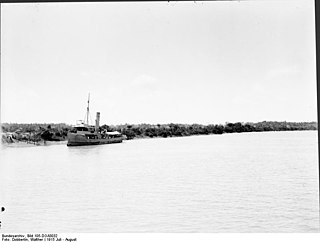 W
WAdjutant was a Kriegsmarine commerce raider that served during World War II.
 W
WSMS Amazone was the sixth member of the ten-ship Gazelle class of light cruisers that were built for the German Kaiserliche Marine in the late 1890s and early 1900s. The Gazelle class was the culmination of earlier unprotected cruiser and aviso designs, combining the best aspects of both types in what became the progenitor of all future light cruisers of the Imperial fleet. Built to be able to serve with the main German fleet and as a colonial cruiser, she was armed with a battery of ten 10.5 cm (4.1 in) guns and a top speed of 21.5 knots.
 W
WUSS Callao (IX-205), an unclassified miscellaneous vessel, was the third ship of the United States Navy to be named for Callao, a seaport in Peru. She was built for the Kriegsmarine as the weather ship and icebreaker Externsteine. The ship was captured on 16 October 1944 by USCGC Eastwind of the Greenland Patrol and was temporarily commissioned into the United States Coast Guard as USCGC East Breeze before being turned over to the United States Navy and commissioned as USS Callao in January 1945. The ship was sold out of service in 1950, and broken up the following year.
 W
WUSS Conecuh (AOR-110) was a fleet replenishment tanker, originally built by F. Schichau, Danzig, in 1938 as a combination oiler and supply vessel or "Troßschiff" for the Kriegsmarine and christened as Dithmarschen. Taken over by British authorities at Bremerhaven when World War II ended, Dithmarschen was allocated to the United States Navy on 15 January 1946 by the Inter-Allied Reparations Commission.
 W
WUSS Conecuh (AOR-110) was a fleet replenishment tanker, originally built by F. Schichau, Danzig, in 1938 as a combination oiler and supply vessel or "Troßschiff" for the Kriegsmarine and christened as Dithmarschen. Taken over by British authorities at Bremerhaven when World War II ended, Dithmarschen was allocated to the United States Navy on 15 January 1946 by the Inter-Allied Reparations Commission.
 W
WSS Egerland was a oil tanker used by the German Navy in World War II. As the SS North America it was ordered from Deutsche Werft Finkenwerder for the Panama Transport Company as in July 1940, for transatlantic shipments to Germany. In March 1941, it was decided to transfer ownership to the Texas Oil Company. In 1941, the tanker was requisitioned by the Kriegsmarine, renamed to Egerland and converted to a support ship of the Trossschiffverband der Kriegsmarine for naval operations in the Atlantic. On the first mission in June 1941, to support commerce raiding by the German battleship Bismarck and the cruiser Prinz Eugen, the ship encountered the British heavy cruiser HMS London on 6 June and was scuttled to avoid capture.
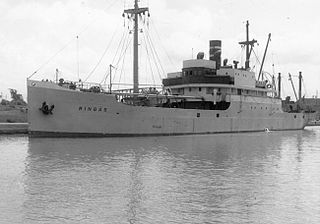 W
WFrancisco Morazan was a 1,442 GRT cargo ship that was built in 1922 as Arcadia by Deutsche Werft, Hamburg, for German owners. She was sold in 1934 and renamed Elbing. She was seized by the Allies in the River Elbe, Germany in May 1945, passed to the United Kingdom's Ministry of War Transport and renamed Empire Congress. In 1946, she was allocated to the Norwegian Government and renamed Brunes.
 W
WEmpire Fowey was a 19,121 GRT ocean liner that was built in 1935 as Potsdam by Blohm & Voss, Hamburg for the Hamburg America Line. She was sold before completion to Norddeutscher Lloyd. While owned by Norddeutscher Lloyd she was one of three sister ships operating the service between Bremen and the Far East. Her sister ships were SS Scharnhorst and SS Gneisenau.
 W
WUSS Callao (IX-205), an unclassified miscellaneous vessel, was the third ship of the United States Navy to be named for Callao, a seaport in Peru. She was built for the Kriegsmarine as the weather ship and icebreaker Externsteine. The ship was captured on 16 October 1944 by USCGC Eastwind of the Greenland Patrol and was temporarily commissioned into the United States Coast Guard as USCGC East Breeze before being turned over to the United States Navy and commissioned as USS Callao in January 1945. The ship was sold out of service in 1950, and broken up the following year.
 W
WFrancisco Morazan was a 1,442 GRT cargo ship that was built in 1922 as Arcadia by Deutsche Werft, Hamburg, for German owners. She was sold in 1934 and renamed Elbing. She was seized by the Allies in the River Elbe, Germany in May 1945, passed to the United Kingdom's Ministry of War Transport and renamed Empire Congress. In 1946, she was allocated to the Norwegian Government and renamed Brunes.
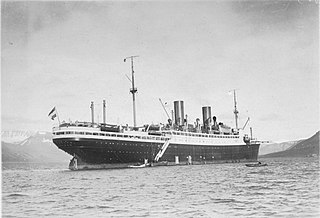 W
WSS General von Steuben was a German passenger liner and later a transport ship of the German Navy that was sunk during World War II. She was launched as München, renamed in 1930 General von Steuben, and renamed Steuben in 1938.
 W
WGrille was an aviso built in Nazi Germany for the Kriegsmarine in the mid-1930s for use as a state yacht by Adolf Hitler and other leading individuals in the Nazi regime. The ship received a light armament of three 12.7-centimeter (5 in) guns and was fitted to be capable of serving as an auxiliary minelayer. Completed in 1935, her experimental high-pressure steam turbines, which were installed to test them before they were used in destroyers, required significant modifications and the ship finally entered service in 1937. Over the next two years, she was used in a variety of roles, including as a training vessel and a target ship, in addition to her duties as a yacht.
 W
WHNoMS Harald Haarfagre, known locally as Panserskipet Harald Haarfagre, was a Norwegian coastal defence ship. She, her sister ship Tordenskjold and the slightly newer Eidsvold class were built as part of the general rearmament in the time leading up to the events in 1905. Harald Haarfagre remained an important vessel in the Royal Norwegian Navy until she was considered unfit for war in the mid-1930s.
 W
WSS Hispania was a Swedish 1,323 GRT triple-expansion engine steamer built in Belgium in 1912. She sank in the Sound of Mull on 18 December 1954 after striking a rock.
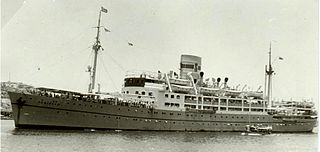 W
WJagiełło was a medium-sized passenger-cargo ship, sailing under the Polish flag between 1948 and 1949, and then decommissioned due to unprofitable and post-war political conditions, which were not conducive to the development of the Polish passenger fleet, and then transferred to the Soviet Union as Pyotr Velikiy, operating Black Sea passenger services until 1973. The ship had been built by Blohm & Voss for Turkish operators, taken over after completion by the German government. After World War 2 it taken over by the British and then the Soviet Government.
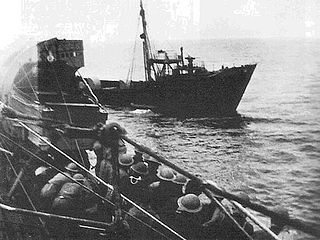 W
WLauenburg was a German weather ship used in the early years of the Second World War to provide weather reports for German shipping, particularly German U-boats. After the German use of such vessels had been identified as a weakness that could be exploited to break the Enigma code, Lauenburg was captured and sunk on 28 June 1941. The Royal Navy acquired important German code books and parts of an Enigma machine.
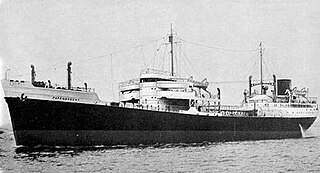 W
WLothringen was an oil tanker ordered for Dutch shipowner Phs. Van Ommeren under the name Papendrecht in Rotterdam. On 16 May 1940, the Kriegsmarine seized her when the ship was still under construction and she was renamed Lothringen. She was commissioned on 23 January 1941. The ship became the property of Erste Deutsche Walfang-Gesellschaft of Hamburg who converted her into a support ship for naval operations by the German battleship Bismarck and cruiser Prinz Eugen in the Atlantic. On 15 June 1941, Lothringen was captured by the British light cruiser HMS Dunedin and taken into service of the Admiralty, crewed by the Royal Fleet Auxiliary. It was renamed Empire Salvage in 1941 and served the Allies for the remainder of the war. After the war, it was handed back to its owners.
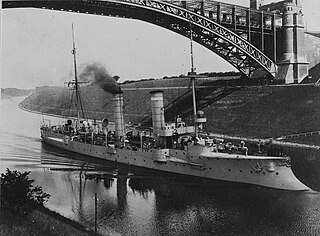 W
WSMS Medusa was a member of the ten-ship Gazelle class of light cruisers that were built for the German Kaiserliche Marine in the late 1890s and early 1900s. The Gazelle class was the culmination of earlier unprotected cruiser and aviso designs, combining the best aspects of both types in what became the progenitor of all future light cruisers of the Imperial fleet. Built to be able to serve with the main German fleet and as a colonial cruiser, she was armed with a battery of ten 10.5 cm (4.1 in) guns and a top speed of 21.5 knots. Medusa served in all three German navies—the Kaiserliche Marine, the Reichsmarine of Weimar Germany, and the Kriegsmarine of Nazi Germany—over the span of over forty years.
 W
WMeteor was a German survey vessel, noted for her survey work in the Atlantic Ocean between 1925 and 1927. Handed over to the Soviet Union following World War II, the ship was renamed Ekvator. Her ultimate fate is not known.
 W
WMi Amigo was originally a three-masted cargo schooner, that later gained international recognition as an offshore radio station. She was built as the schooner Margarethe for German owners. A sale in 1927 saw her renamed Olga and she was lengthened in 1936. During the Second World War, she was requisitioned by the Kriegsmarine and served as an auxiliary ship between 1941 and 1943. In 1953, the ship was again lengthened to 133 feet 9 inches (40.77 m). In 1959, she was sold for conversion to a floating radio station and was renamed Bon Jour. Subsequently, she was renamed Magda Maria in 1961 and Mi Amigo in 1962. She served, intermittently, as a radio ship, until 1980, when she sank in a gale.
 W
WMonte Pascoal was a Monte-class ocean liner built in 1930 by Blohm & Voss, Hamburg for the Hamburg-Südamerikanische Dampfschifffahrts-Gesellschaft (HSDG). She managed to reach Germany after the outbreak of World War II and was requisitioned by the Kriegsmarine for use as an accommodation ship. She was sunk in 1944 during an Allied air raid on Wilhelmshaven. Subsequently refloated, she was seized by the Allies post war and was scuttled in the Skaggerak with a cargo of gas bombs in 1946.
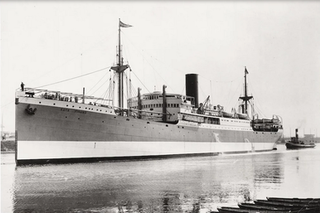 W
WMV Kota Pinang was a Cargo liner that was built by Nederlandsche Scheepsbouw Maatschappij in Amsterdam in 1930 and launched on 23 November 1930. In May 1940, the ship was requisitioned by the Kriegsmarine, converted into a Reconnaissance ship and renamed to the MV Klara.
 W
WMi Amigo was originally a three-masted cargo schooner, that later gained international recognition as an offshore radio station. She was built as the schooner Margarethe for German owners. A sale in 1927 saw her renamed Olga and she was lengthened in 1936. During the Second World War, she was requisitioned by the Kriegsmarine and served as an auxiliary ship between 1941 and 1943. In 1953, the ship was again lengthened to 133 feet 9 inches (40.77 m). In 1959, she was sold for conversion to a floating radio station and was renamed Bon Jour. Subsequently, she was renamed Magda Maria in 1961 and Mi Amigo in 1962. She served, intermittently, as a radio ship, until 1980, when she sank in a gale.
 W
WSS Polarlys was a Hurtigruten coastal passenger/cargo steamer built in 1912. She was seized by the Germans during the Second World War, and served several stints in the Kriegsmarine. Having resumed her Hurtigruten service after the war until 1951, and in 1952 she was renamed Sylvia. At the same year, she was transferred to the Royal Norwegian Navy, and served under the name HNoMS Valkyrien as a motor torpedo boat tender between 1953 and 1963.
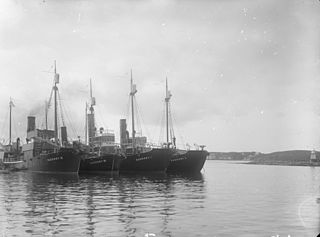 W
WRío Chira was 199-ton steel-hulled vessel with a long and varied history, serving under several names as a whaler, fishing boat, naval patrol boat, passenger/cargo ship and freighter between 1914 and 1981.
 W
WSaar was the first purpose-built submarine tender of the German Kriegsmarine, and served throughout World War II. She later served in the post-war French Navy as Gustave Zédé.
 W
WHNoMS Tordenskjold, known locally as Panserskipet Tordenskjold, was a Norwegian coastal defence ship. She, her sister ship, Harald Haarfagre, and the slightly newer Eidsvold class were built as a part of the general rearmament in the time leading up to the events in 1905. Tordenskjold remained an important vessel in the Royal Norwegian Navy until she was considered unfit for war in the mid-1930s.
 W
WVityaz is a research vessel that was built in 1939 by Deutsche Schiff- und Maschinenbau AG, Bremen, Germany as Mars for Neptun Line, Bremen. She served with the Kriegsmarine during World War II and was seized by the United Kingdom in 1945. She was renamed Empire Forth for the Ministry of War Transport (MoWT).
 W
WVorpostenboot, also referred to as VP-Boats, flakships or outpost boats, were German patrol boats which served during both World Wars. They were used around coastal areas and in coastal operations, and were tasked with – among other things – coastal patrol, ship escort, and naval combat.
 W
WSMS Zähringen was the third Wittelsbach-class pre-dreadnought battleship of the German Imperial Navy. Laid down in 1899 at the Germaniawerft shipyard in Kiel, she was launched on 12 June 1901 and commissioned on 25 October 1902. Her sisters were Wittelsbach, Wettin, Schwaben and Mecklenburg; they were the first capital ships built under the Navy Law of 1898, brought about by Admiral Alfred von Tirpitz. The ship, named for the former royal House of Zähringen, was armed with a main battery of four 24 cm (9.4 in) guns and had a top speed of 18 knots.